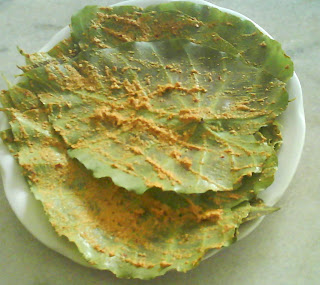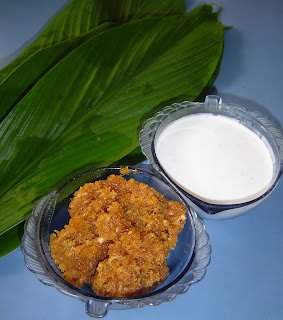
Recipe from the same goes as follows:
Ingredients

1 medium size brinjal/eggplant
1/2 lemon size tamarind
1 medium size Onion
3-4 Green chillies
2 tbls chopped Coriander leaves
1/2 tsp oil
For thadka
2 tsp oil
1 tsp urad dal
1 tsp mustard
1 red chili
4-5 curry leaves
2 pinches of hing powder

Method
- Spread some oil on matti gulla / brinjal and roast it in flame for 5-8 mins. Keep turning the brinjal so that it gets evenly roasted. Keep it aside for it to cool down.
- Soak tamarind in 1 cup of water for about 10 mins.
- Chop onions, green chillies and coriander. Add these chopped ingredients to the tamarind water.
- Now peel off brinjal and mash till it comes to curry consistency.
- Finally add mashed brinjal with tamarind water and beat it for about a min so that it gets mixed well with the tamarind solution.
- For preparing tadka, heat oil in small pan. Add mustard to hot oil. Add urad dal just before mustard starts cracking. Now add curry leaves and red chilly (cut into small pieces). Wait till red chillies to turn its color before turning off the flame. Add 2 pinches of hing to complete tadka.
- Add this tadka to curry and mix well
- Oil is spread on brinjal to make peeling easier
- These brinjals can also be roasted in oven
- Any variety of the brinjal could be used. But the roasting varies with different variety

This can be served with both rice or rotis.















